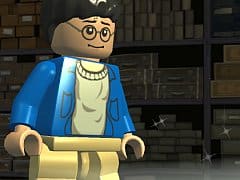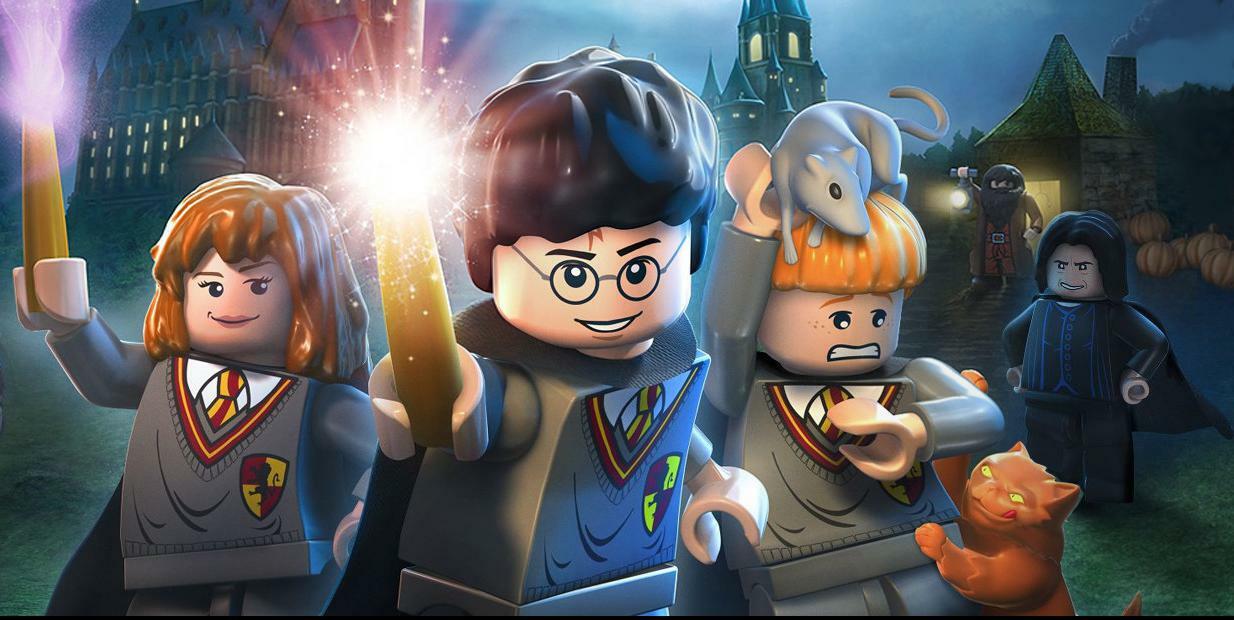You can trust VideoGamer. Our team of gaming experts spend hours testing and reviewing the latest games, to ensure you're reading the most comprehensive guide possible. Rest assured, all imagery and advice is unique and original. Check out how we test and review games here
Everyone loves LEGO, and everyone loves Harry Potter (well, almost everyone). That’s why LEGO Harry Potter: Years 1-4 looks set to be full to bursting with win. Thankfully, you can prepare yourself for the inevitable win bursting episode by reading our in depth interview with producer Loz Doyle. Read on for hot info on the brand new brick-building system, LEGO Hogwarts and more.
Q: How deep does the new brick building system really go?
Loz Doyle: We have a purple base plate that we use as the indicator, which you can use because it’s LEGO. In the first case you just have two pieces you can stack however you want. But as you progress through the game we’ll add more and more pieces. One of the levels later on, you have to construct a bridge. From this side you move the bits over, and they snap in underneath and on top, so you can build like you would with LEGO. That’s eight or nine pieces you build the bridge with. After you’ve used it you can then rebuild it into a tower in order to get you up to get a red brick or something else. So it’s quite versatile. But these purple things indicate where it is.
Q: So it’s confined to certain areas of the game?
LD: That specific thing is, yes. You can also put a character on it and move them around, so you can get them up to higher places or other areas or secret places as well. But we do have the LEGO Builder. In Indiana Jones 2 you can build your own levels, so you can put your LEGO down, build buildings out of the LEGO, set traps and do all sorts of things.
Q: In the demonstration, the brick building was on a 2D plane. Will you be able to make elaborate structures in 3D?
LD: It’s on a 2D plane because obviously we do concentrate on kids, six to 12. We’ve done a lot of testing with kids and they do struggle with depth perception a lot of the time. So a lot of our jumps we tend to have side on because they can’t judge a jump into the screen. It’s the same with the builder, and we keep the controls simple as well.
Q: LEGO Batman has sold over a million copies in the UK alone. Congratulations. What is it about the LEGO series that makes it so popular?
LD: It doesn’t take itself too seriously. It doesn’t punish you. That’s one of the things we thought about from the beginning: why do players want to get punished in a game? They want to have fun. So when we made LEGO Star Wars it was: if you die you just come back. Why would you want to re-do the section you’ve just struggled to do? It’s fairly simple, really, but a lot of people didn’t think about it. The other important thing is the two-player aspect, and parents being able to play with their children. That’s been important for a lot of people. We’ve had a few parents saying, thanks, we never played video games before, but now we’re playing them with our kids. It’s that constant reward, and collecting things – we know kids love collecting things: the studs, the characters. That sort of thing, we just make sure there’s lots of it in the game. There seems to be so many things. The storytelling – that’s funny. There aren’t many funny games around. And of course the LEGO.
Q: Everyone loves the LEGO game cutscenes. How do you go about creating them?
LD: A lot of that comes down to the cutscene team and the individuals who bounce ideas off of each other about how they can handle a specific scene. The other thing to point out really is we’re not just telling the story; we’re also setting up the level. You’re trying to tell a bit of the story but also say, this is the story but now you’re going to fight the cave troll. The animators look at the film and, because we’ve got a lot of the same animators who did Star Wars and Batman, they know how to deal with scenes; they know how to deal with death scenes and make them funny. We had a scene with Padmé in Star Wars; she was pregnant, and Anakin basically throws her into the wall. We had to deal with that scene – you wouldn’t imagine you would see that in LEGO – it’s just the way they can do it.
Q: Throughout the Harry Potter books and films, the characters get older. Do they change in the game as you go from years one to four?
LD: There are quite a lot of outfit changes, but that’s just to match them with the films. They have the casual clothes, they have the Quidditch uniforms, and they have the school uniforms. The main characters stay the same because the mini-figures stay the same. But there’s a bit of a balance, because LEGO has done some more models, so we may use some of the newer models if it makes sense. In film four, Dumbledore has a different outfit than he had in year one, so we would use that. But mostly the characters will stay looking the same because they do in the plastic.
Q: Hogwarts is the biggest single area you’ve ever created. Is there a danger players will get lost or not know where to go next?
LD: We have the same concern ourselves. In year one, while the whole of Hogwarts does exist, you can’t access it. We lock off doors, areas, you can’t go outside right at the beginning. You start in the common room, and even though it feels like you’re in Hogwarts – you see the main hall and you’re like, oh this is huge – you can’t go in very many places. Right at the beginning you can only go and do your first lesson. We guide the player to that first lesson. There’s nowhere else they can go. So despite the fact that they can mess around in a few rooms on the way if they want, there’s no chance of them getting lost because there’s only one place to go. And then after that there’s only another place to go. We gradually open up Hogwarts so the player can get their bearings. As the years progress we open up more and more and more, until year four – when you should know your way around by then – it’s all open; the grounds, the secret rooms.
Q: Are you able to backtrack and go wherever you want at that point?
LD: Yeah.
Q: Just how big is Hogwarts?
LD: It is big, but what we’ve done is, even though it feels like Hogwarts, we haven’t just recreated Hogwarts exactly as it is in the films. Whereas in a film they can have a location over here, location over here, then they just edit and they arrive at the place, in a game you’ve actually got to travel. So we’ve made it look like Hogwarts and feel like Hogwarts, but we’ve designed it around being able to get around and get to the places you want to go more easily. So, for example, all of the common rooms are off one area, whereas in the film there’s one in the basement, one up in the tower and one over here and one over there. We allude to that by having all four common rooms in one place and then to get to the Slytherin one, which would normally be down nine flights of stairs, you just go through a door, down one set of stairs and you appear in the common room. So while we say, yes, it’s down there, you don’t have to physically do it. It’s the same with the Great Staircase. In another Harry Potter game you had to go from the bedroom, walk down these seven or eight flights of stairs just to get down to the ground. It’s just not fun. So we just have down the stairs, and you appear as if you’ve come down six flights of stairs. It’s just being sensible in the game, and thinking about the game and people playing the game rather than, I must be exactly perfect.
Q: Has J.K. Rowling ever poopooed one of your ideas?
LD: She has a group of people who deal with that.
Q: Well, have her people poopooed one of your ideas?
LD: They’ve been understanding of the game. They’re not necessarily gamers themselves. They’re into the books and that side of things. For them to come to LEGO Harry Potter, which is a little bit wacky compared to what they’re used to, and get a grasp of what the game is like, how you can have a cutscene that isn’t exactly telling the film perfectly, and the characters are doing things with their arms and heads flying off – it took them a while to understand. But once we showed them the game, they instantly got it, and they were laughing, going, okay, when we saw it written down we were like, no, there’s no way that’s going to happen. But now we see it in the game, it’s fine. So it was a matter of them seeing it to understand.
LEGO Harry Potter: Years 1-4 is due out on Xbox 360, Wii, PS3, DS, PSP and PC in May 2010.
LEGO Harry Potter: Years 1-4
- Platform(s): Android, macOS, Nintendo DS, PC, PlayStation 2, PlayStation 3, PS Vita, PSP, Wii, Xbox 360
- Genre(s): Action, Adventure, Family, Platformer

/https://oimg.videogamer.com/images/552d/lego_harry_potter_years_14_18.jpg)
/https://oimg.videogamer.com/images/8363/lego_harry_potter_years_14_17.jpg)
/https://oimg.videogamer.com/images/b051/lego_harry_potter_years_14_16.jpg)






